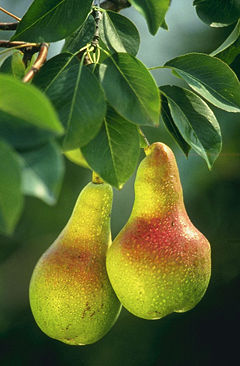This post has already been read 18518 times!
 Quick wins… Bang for the buck… Low hanging fruit… Whatever you call it, many business people have been conditioned to use a somewhat short-sighted approach for making change in their organizations.
Quick wins… Bang for the buck… Low hanging fruit… Whatever you call it, many business people have been conditioned to use a somewhat short-sighted approach for making change in their organizations.
It’s a natural human characteristic – we want the bottom-line benefits, but we also want to get them with minimal effort and risk. The problem with this approach is that you can often be sacrificing larger long term gains by taking a small payout now.
If you’re hungry right now and a single apple will suffice, then it’s okay to pick one from the bottom of the tree. But what if you’re counting on the tree to feed you for the entire season? Is continually picking the low hanging fruit a sensible and sustainable strategy?
According to Albert Pell of Pell’s Citrus & Nursery in Osteen, Florida, “An inexperienced picker would pick the low hanging fruit first,” Pell says. “But an experienced picker would know to start at the top.”
The reason: starting low makes the picker’s job harder, not easier. “If you’re experienced, you rest the bag – which is around your neck and shoulders – on the ladder. You fill it as you go down, so it’s full when you get to the bottom.”
Even worse, picking the low hanging fruit first would mean taking under ripe fruit and
leaving ready-to-eat fruit on the tree. “The lower fruit would need to be picked last to give it more time to develop,” says Eric Curry, a plant physiologist at the U.S. Department of Agriculture’s Tree Fruit Research Laboratory in Wenatchee, Washington.
Joe Grant, a farm adviser at the University of California Cooperative Extension in Stockton, which offers research results and hands-on advice to California fruit growers, agrees. “When growers send pickers to the field, they don’t advise them to pick the low-hanging fruit first,” Grant says. “They tell them to pick what’s ready to pick. And the first fruit to ripen is what’s high up and well exposed to the sun.”
In the realm of supply chain planning, most people find the instant gratification of low
hanging fruit irresistible. But are you sure you’re not creating problems for yourself down the road?
To ensure that you’re maximizing your harvest from the long haul, you should take a lesson from the orchard operators – start at the top of the tree.
This means having the entire business process well thought out and documented – every step from the point of consumption, right back to the point of manufacture.
The ultimate consumer bears all of the costs of the supply chain. The fact that most retail supply chains cut across several organizations can often make it easy to miss the forest through the trees.
For example, less frequent deliveries to stores may result in transportation savings, but how much more inventory will be carried at store level? How many sales will be lost as a result of stock outs?
We’re not saying that opportunities for “quick wins” don’t exist – they do. But they need to be evaluated against the entire process for getting product into the customers’ hands. Otherwise, what may look like a great short-term opportunity could turn out to be a serious long-term drain on your bottom line.
A well documented process map is a “living document” that can help you evaluate and communicate process change. Having helped numerous clients through this exercise, we can tell you that documenting your processes is very much like replacing your shag carpet with new Italian tile: It’s a lot of work – some of it fun and some not – but the result makes the whole thing worthwhile.
In the meantime, when someone suggests that picking the low hanging fruit is always the best strategy, you can at least tell them the truth about fruit farming!
- Small Data, Big Insights - July 14, 2016
- Is Flowcasting the Supply Chain Only for the Few? - June 3, 2016
- Philosophy - February 12, 2016
